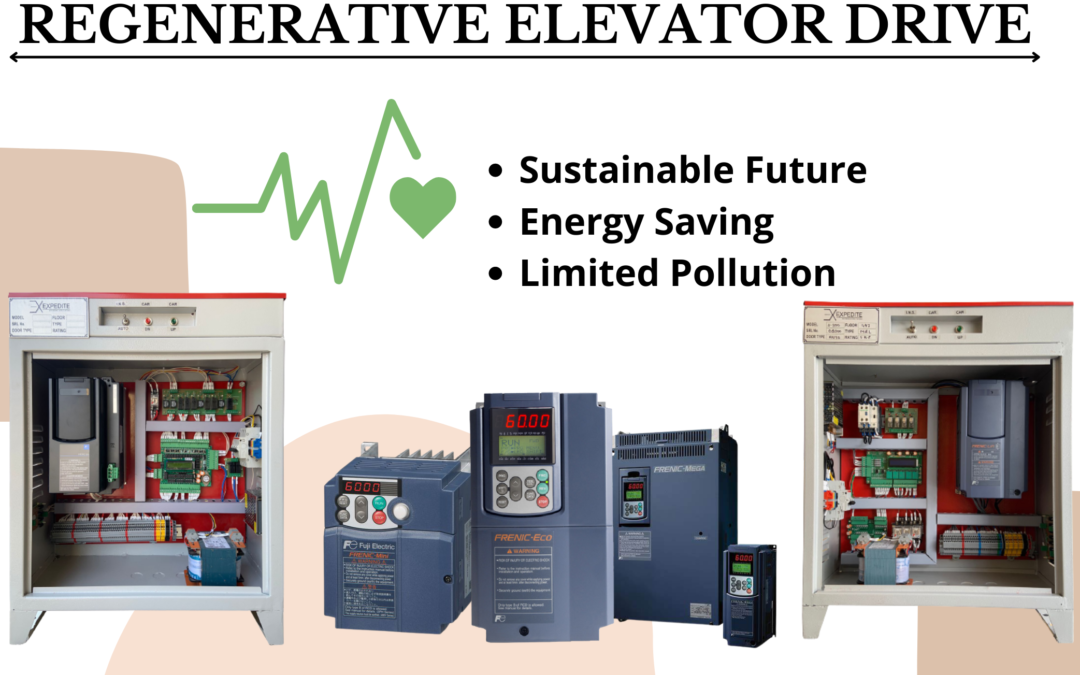With people moving towards a sustainable future with zero energy wastage the need for highly advanced energy efficiency in elevator systems was a need of the hour. This gave rise to Regenerative Drives. Each time when an elevator is in use, a comparatively higher amount of energy is required to lift the elevator shaft up and down. But the reality is that the friction and force of gravity of this movement, in turn, generates a higher amount of energy which can be backed up for the working of the elevator system. The traditional elevator system has not only had any sorts of potential sources to store the energy, but it also dissipated the energy in the form of heat into the machine room increasing the temperature of the entire elevator system.

Based on the use of energy-saving and energy feedback technology the modern elevators are all set to feed the energy back into their regenerative drives which shall be consumed later on. A regenerative drive not only saves energy but also limits the level of pollution created by the functioning of the entire elevator system. It averagely saves around 30% of the energy compared to a traditional one.

How does it work? Power must flow in both directions,i.e the input and the output segment in a regenerative drive. This is done by the fusion of two inverters. The input inverter allows electricity to go from the power reservoir to the mains if required and permits the reverse flow to the power supply unhindered when the reservoir exceeds typical levels of operation. When the machine needs to drive, the input inverter circuitry is activated automatically to enable the power supply to pass and keep the power reservoir in the best condition. When the motor load overhauls the motor, the electric motor functions as a generator, and the electricity is sent to the power inverter and pumped up the electric reservoir. The surplus power is then switched by the input inverter to return excess energy to the mains under these situations. The regenerated power is synchronized with phase rotation of the input phases by a significant function of an input inverter.
By collecting wasted electricity and returning it to the building’s power network, our regenerative drive technology increases energy savings. At Expedite, we promote regenerative drive solutions for a better sustainable future.



